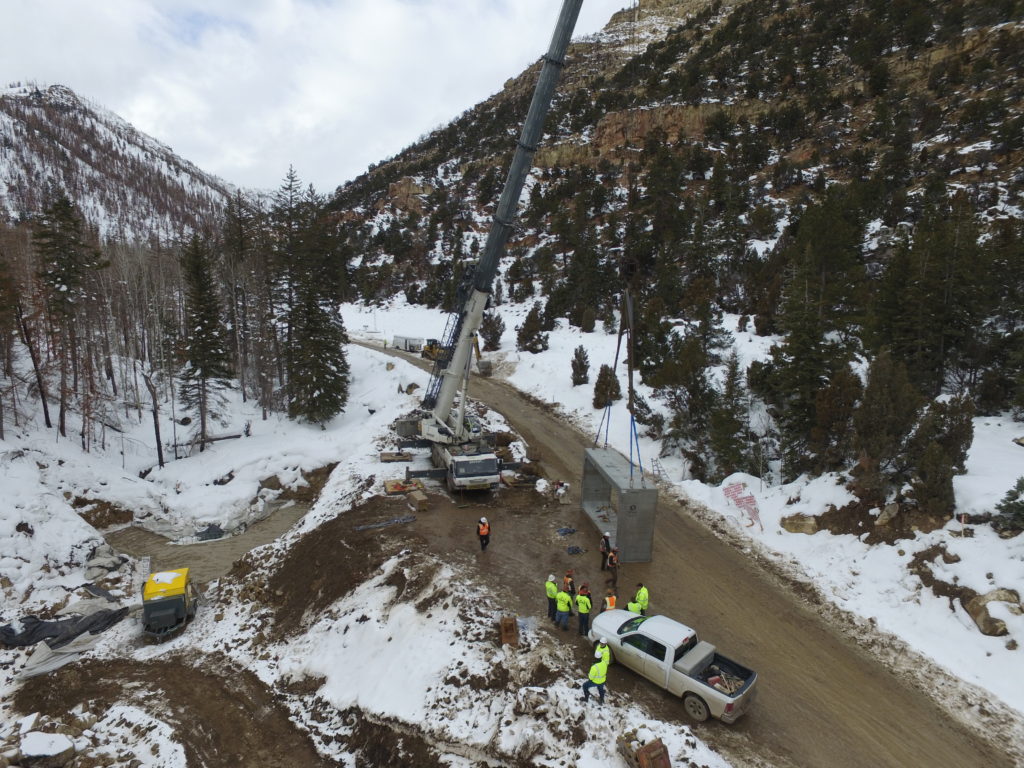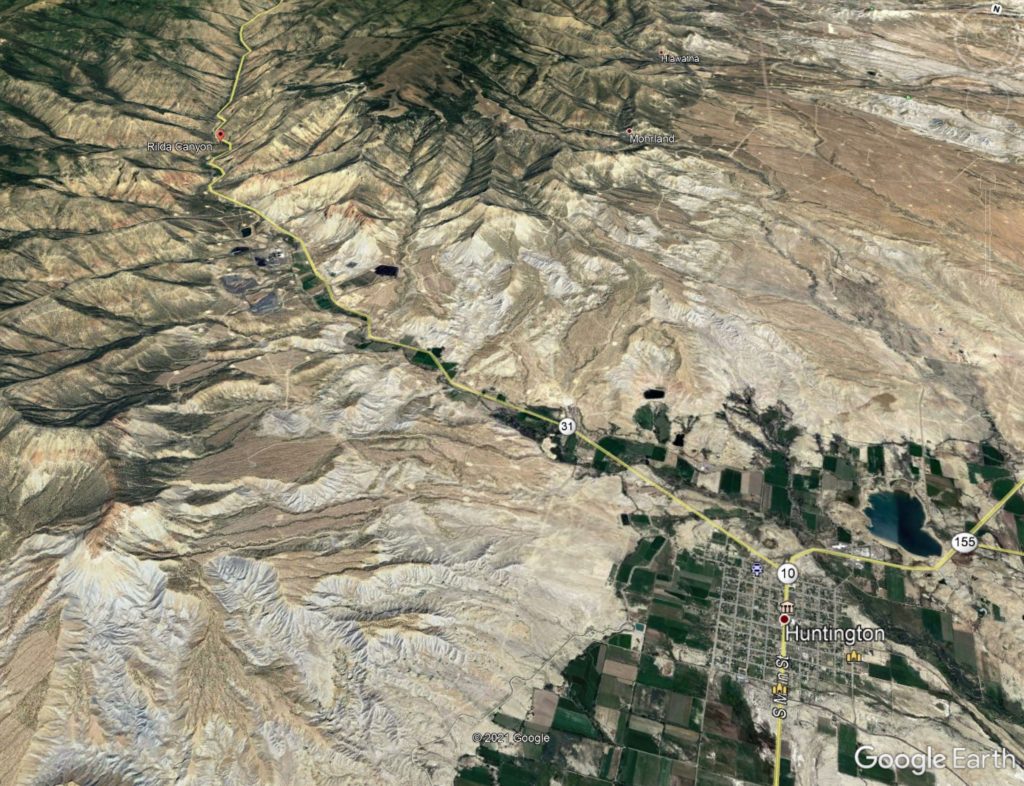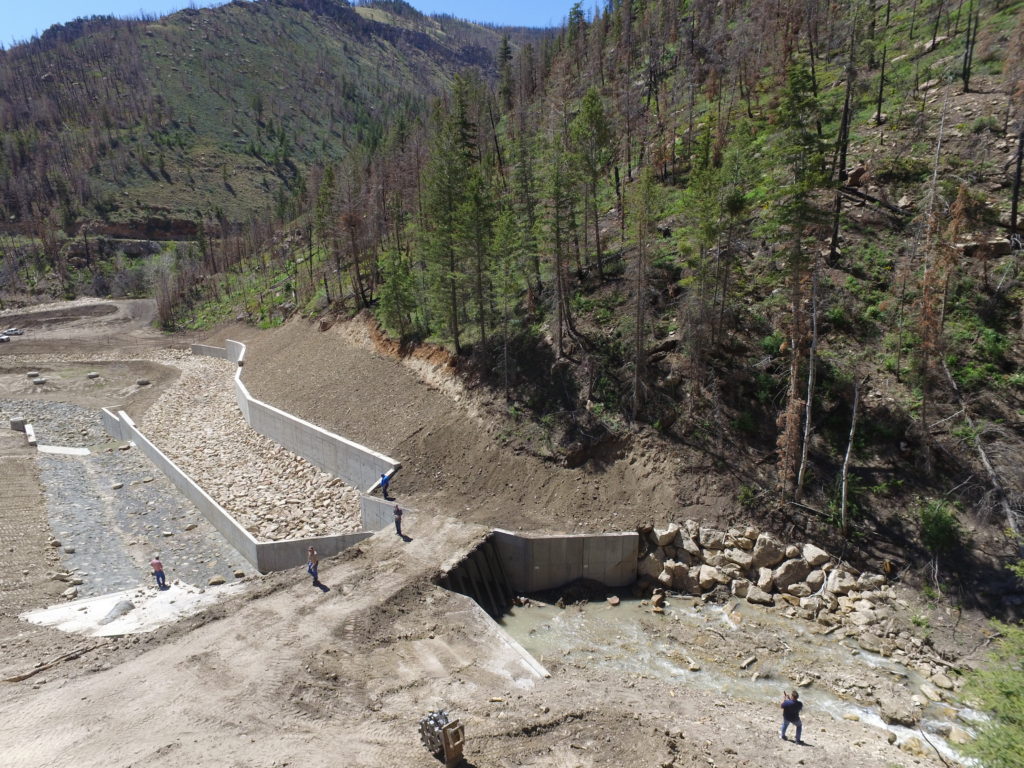
Project Name: Trail Mountain Watershed Project – Huntington Canyon / Rilda Canyon

Owner: Emery County, Utah
Contractor: Perco Rock
Engineering Firm: Johansen & Tuttle
Date: December 2019 – June 2020
Manufacturer: Oldcastle Infrastructure
Product Specifications (size, material, lining, coating, joints): A total of four precast box culvert sections, each being 6 feet in length, with a 20-foot span, 10-foot rise, and a total length of 25 linear feet. This project also included 22-foot by 14-foot by 12.5-foot precast wing walls.
Total Weight: Approximately 215 tons

Photo courtesy of Oldcastle Infrastructure
Overview:
This project included the installation of a precast box culvert diversion structure, large wing walls, and a debris structure installed in Rilda Canyon, a smaller canyon in Huntington Canyon in Emery County. The purpose of this project was to keep large debris from impacting the power plant downstream. Due to large forest fires years earlier, many downed timbers within the Trail Mountain Watershed were finding their way into Huntington Canyon and there was a threat to the downstream structures. This debris structure was installed in order to protect it.
Narrative:
In 2019, Emery County had a unique set of problems that needed to be addressed. Years earlier, forest fires resulted in dead trees all throughout the Trail Mountain Watershed in Huntington Canyon. Under normal circumstances, burned trees are uprooted during runoff season and make their way into the rivers and streams. This is a naturally occurring phenomenon, and in remote watersheds it typically will not cause an issue. However, there were some design considerations that made Rilda Canyon – a smaller canyon within the much larger Huntington Canyon – not a typical watershed.

Photo courtesy of Google Earth
First, there was a large power plant down stream that provided power to the City of Huntington. If these trees and other debris were conveyed all the way down the mountain during runoff season, they would surely wreak havoc on the power plant structure below. It was imperative that the County find a way to protect their power source before it was too late.
Additionally, there were four large wells in the area that provided drinking water to the community below. Should these wells be impacted or covered by the large debris, it could have major implications for supplying the drinking water downstream.
The solution was to install a large precast debris and diversion structure just upstream of the wells. This would allow the large trees other debris to be collected on the large grate, and be cleared out by a contractor. In addition, water would be diverted to a channel just below the four wells. In a large flooding event or if debris was blocking the grate, the diversion structure would allow the flows to go into a precast channel that would go up and around the wells, as shown in the picture below.

Photo courtesy of Oldcastle Infrastructure
All of the precast sections were installed in December of 2019. It was extremely cold during this time, and the days were very short, so some of the sections were installed in the dark. The contractor was also fighting the elements, as snow storms in the area were common during this time. Because they used precast concrete structures instead of cast-in-place, the contractor did not have to worry about the snow and the low temperatures for curing the concrete. By installing a good bedding and a gravel leveling course, the structures were installed quickly and smoothly, allowing for a successful project.

Photo courtesy of Oldcastle Infrastructure
The remainder of the work, including construction of channels, installation of the debris grate, and the grading around the precast structures, was performed during the rest of the winter and spring, and was completed in June 2020.